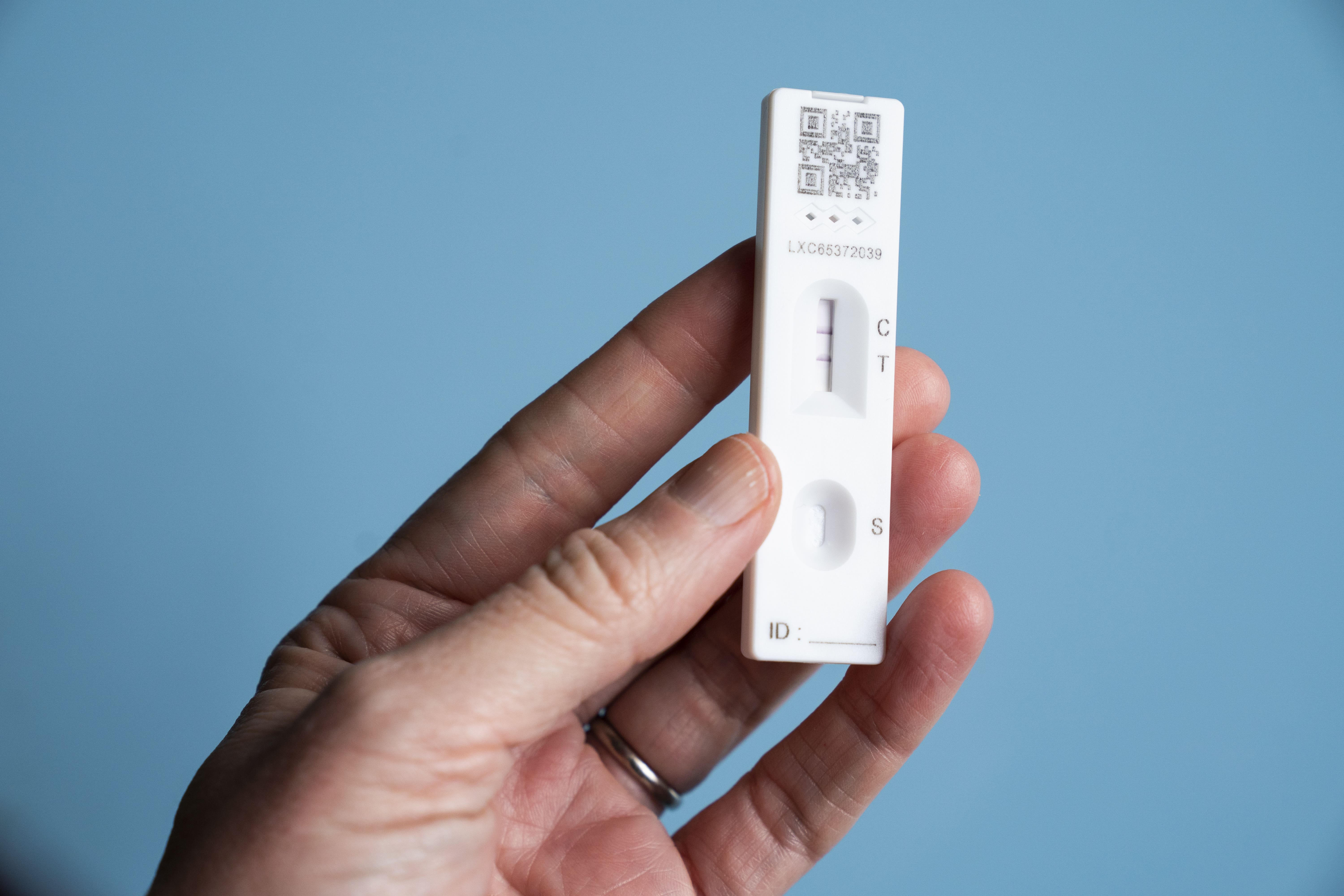UK Covid-19 infections jump to highest level since summer
About one in 20 people in England are likely to have had coronavirus over the festive period.

Your support helps us to tell the story
From reproductive rights to climate change to Big Tech, The Independent is on the ground when the story is developing. Whether it's investigating the financials of Elon Musk's pro-Trump PAC or producing our latest documentary, 'The A Word', which shines a light on the American women fighting for reproductive rights, we know how important it is to parse out the facts from the messaging.
At such a critical moment in US history, we need reporters on the ground. Your donation allows us to keep sending journalists to speak to both sides of the story.
The Independent is trusted by Americans across the entire political spectrum. And unlike many other quality news outlets, we choose not to lock Americans out of our reporting and analysis with paywalls. We believe quality journalism should be available to everyone, paid for by those who can afford it.
Your support makes all the difference.Covid-19 infections in the UK have jumped to their highest level since the summer, with nearly three million people likely to have had the virus at Christmas.
The figures come as the country is experiencing its worst flu season for a decade and ambulance handover delays at hospitals are at a record high.
A total of 2.97 million people in private households in the UK were likely to test positive for coronavirus in the week to December 28, according to the Office for National Statistics (ONS).
This is more than double the number at the start of the month and is the highest total since mid-July.
Around one in 20 people in England are likely to have had Covid-19 over the festive period, along with one in 18 in Wales and one in 16 in Northern Ireland.
Prevalence of the virus is slightly lower in Scotland, at one in 25 people.
Michelle Bowen, ONS head of health surveillance, said that infections have risen across the whole of the UK, with levels in Northern Ireland now at their highest since March 2022.
She added: “Across English regions, infections have increased in the North East, Yorkshire and the Humber, the East Midlands, the East of England, the South East and the South West.
“Cases have also increased in those aged two to school Year 6, and those aged 50 years and over.”
The current wave of coronavirus could prove to be one of the biggest the UK has seen.
Infections peaked at 4.3 million last winter during the spread of the Omicron variant of Covid-19, but this was topped a few months later during the wave caused by the Omicron BA.2/3 subvariants, when infections reached a record 4.9 million.
The latest wave has not been linked with a specific new variant, but is instead likely to reflect an increased amount of social mixing and airborne transmission, particularly during the cold weather when more people are likely to be indoors.
A new subvariant of Omicron, named XBB.1.5, has become dominant in parts of the US but is responsible for fewer than 5% of infections in the UK, experts said.
Jonathan Ball, professor of molecular virology at Nottingham University, said there is “no evidence” that XBB.1.5 is more dangerous than other variants, adding: “It might be able to escape antibodies, but that’s not the only immunity we have. Our immune system is used to adapting to viruses.
“We’d better get used to the emergence of new variants, at least for the foreseeable future.
“Yes, they will lead to new waves of infection, but vaccination is still proving to be a very effective weapon to protect the most vulnerable from serious disease.”
The number of people in hospital who have tested positive for Covid-19 has been on an upward trend since the start of December, though there are signs the figures may have levelled off in recent days.
Some 9,332 patients in England were recorded as having Covid-19 on January 4, down 1% on the previous week.
Hospital numbers in England reached 17,000 during the wave of infections last winter.
The rise in Covid-19 patients is one of a number of challenges facing the NHS.
An average of 5,105 flu patients were in general hospital beds in England last week, up 47% on the previous week and nearly seven times the number at the start of December, NHS data shows.
Hospital admissions for flu were running at their highest level in at least a decade just before Christmas, though the rate fell in the run-up to New Year.
Ambulance handover delays have hit a new high, with more than a quarter (26%) of patients waiting more than an hour to be handed to A&E teams last week and about four in 10 (44%) waiting at least 30 minutes.
This compares with 10% waiting more than an hour at this point last year while 23% waited at least half an hour.